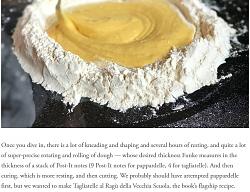You could read about the papyri discovered by Pierre Tallet.Interesting hypothesis but applies more to the Sphinx than the pyramids.
The Sphinx is apparently a natural rock out-cropping that was carved way, way back. It's still one of the biggest puzzles of the Giza plateau. Some archaeologists believe it was carved into an image of a lion by stone age natives long before the appearance of the Egyptian culture (it still has lion paws). Only later was it reshaped into the image of an Egyptian king. Which king is also an issue. Some folks think it represents Khufu, the builder of the great pyramid. Hard to tell since the only confirmed image of Khufu is a tiny 3" statue in the Cairo museum.
Also, if you examine the interior of the pyramid, there is evidence of carved, individual blocks of stone, not in situ rock carved to look like blocks. But the real kicker is the burial chamber itself. The sarcophagus is too big to fit around the corner between the ascending and descending passage so it must have been placed in the chamber before the structure above it was constructed. It's granite so it wasn't carved from the surrounding limestone bulk of the pyramid.
What amazes me is the fact that, despite centuries of searching, nothing depicting the construction of the pyramids has been found. Modern folks like us are in awe of the pyramid; the folks alive during its construction would have been positively dazzled. If you had worked on it, wouldn't you want the fact recorded on your tomb walls so the gods knew you were a dedicated worker? OK, we can't expect the ephemera of that age to still exist, but the fact that a bunch of folks who liked to chisel all manner of stories into rock suggests that some hints about how they did it should appear, not so?



 LinkBack URL
LinkBack URL About LinkBacks
About LinkBacks



 Reply With Quote
Reply With Quote

 Why not just say 1mm?
Why not just say 1mm?



Bookmarks